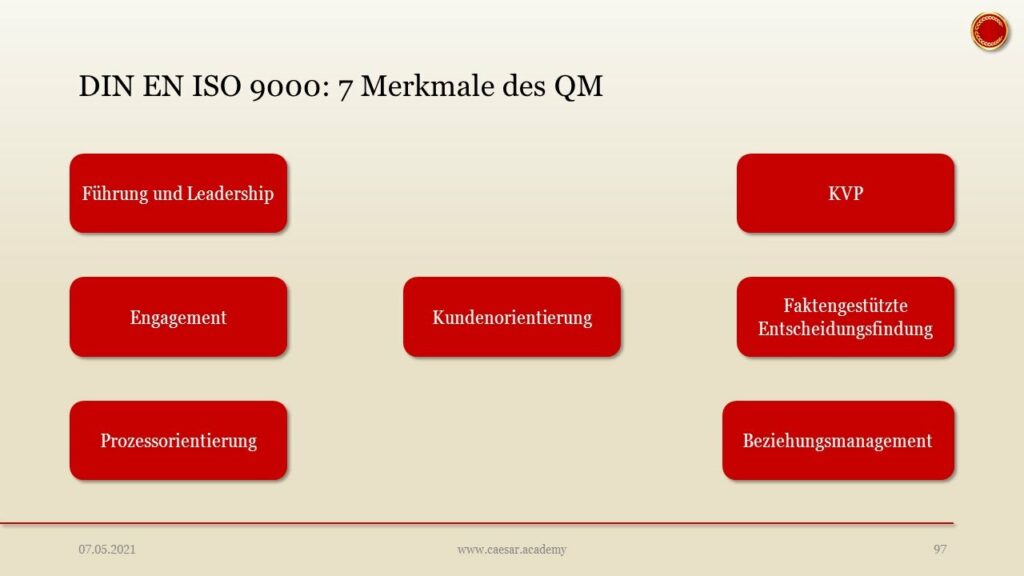
1. What is ISO 9000?
ISO 9000 is a set of international standards developed by the International Organization for Standardization (ISO) that specifies the criteria for a quality management system. It provides a framework for organizations to implement quality management practices and demonstrate their ability to consistently deliver products and services that meet customer and regulatory requirements.
The ISO 9000 family of standards is widely recognized and adopted by organizations across various industries worldwide. It covers a range of topics including customer focus, leadership, involvement of people, process approach, evidence-based decision making, and continual improvement.
By implementing ISO 9000 standards, organizations can enhance customer satisfaction, improve operational efficiency, minimize errors and defects, and ultimately achieve sustainable growth. The standards enable organizations to establish clear processes, streamline operations, and ensure that products and services consistently meet or exceed customer expectations.
ISO 9000 certification is not mandatory but it can provide organizations with a competitive edge. It demonstrates to customers, suppliers, and other stakeholders that the organization is committed to delivering quality products and services. In addition, ISO 9000 certification can enhance the organization’s reputation, increase customer trust, and open doors to new business opportunities.
2. Importance of Risk Management in ISO 9000
❗️Risk management is a crucial aspect of the ISO 9000 standard. By incorporating effective risk management practices, organizations can enhance their ability to identify, analyze, and mitigate potential risks that may impact the quality of their products or services.
⭐️ISO 9000 emphasizes the importance of a systematic approach to risk management. This involves identifying and assessing risks, implementing necessary controls and preventive measures, as well as monitoring and reviewing the effectiveness of these measures. By following this approach, organizations can proactively address risks and prevent potential quality issues before they occur.
🔎Risk management also plays a significant role in ensuring compliance with ISO 9000. By integrating risk management into their quality management systems, organizations can demonstrate their commitment to continuously improving their processes and minimizing the likelihood of quality-related failures or non-compliance.
📈Moreover, effective risk management can contribute to organizational success and growth. By identifying and addressing risks early on, organizations can avoid costly disruptions, reputational damage, and customer dissatisfaction. Proactive risk management allows businesses to build resilience, maintain customer trust, and improve overall performance.
📚In conclusion, the importance of risk management in ISO 9000 cannot be overstated. By implementing systematic risk management practices, organizations can enhance their ability to identify and mitigate potential risks, improve compliance, and achieve long-term success in delivering high-quality products or services. Taking a proactive approach to risk management is essential in today’s competitive business environment and ensures that organizations remain adaptable and resilient in the face of uncertainties.
3. Defining Risk in ISO 9000
🔍✍️ In this blog post, we will discuss the topic of defining risk in ISO 9000. ISO 9000 is a set of international standards that provide guidelines for implementing a quality management system. Risk management is an integral part of these standards, as it helps organizations identify and address potential threats to their processes and objectives.
🔐📊 Risk is often defined as the potential for an event or action to have a negative impact on the achievement of objectives. In the context of ISO 9000, risk can arise from various sources, such as economic, operational, legal, or reputational factors. The standard emphasizes the importance of understanding and managing risk to ensure the effectiveness of a quality management system.
⚖️✅ ISO 9000 provides a systematic approach to risk management, which involves identifying and analyzing risks, assessing their likelihood and potential impact, and implementing appropriate preventive or corrective actions. By addressing risks proactively, organizations can minimize the likelihood of incidents or failures that may result in customer dissatisfaction or non-compliance with regulatory requirements.
📚📌 Some key terms related to risk management in ISO 9000 include risk identification, risk analysis, risk evaluation, risk treatment, and risk monitoring. These terms highlight the different stages of the risk management process, emphasizing the need for a structured and continuous approach to risk management within an organization.
🌍🌐 In summary, defining risk in ISO 9000 is crucial for maintaining a robust quality management system. By understanding and addressing potential risks, organizations can enhance their ability to deliver products or services that meet customer expectations and comply with applicable regulations. Implementing effective risk management practices can ultimately contribute to the overall success and sustainability of an organization.
- 📚💡 Descubre los principales términos y definiciones de la norma ISO 9000
- 🏆 Logra la excelencia con la ⚙️ certificación ISO 9002: Guía completa y paso a paso
- 🚫️ Las desventajas de la norma ISO 9000: ¿Cómo afecta a tu empresa?
- 🌟 ¡Descubre todo sobre la ISO 9001 última versión 2018! ¿Qué cambios trae?
- 🏆 ¿Por qué las 🏢 Empresas con Certificación ISO 9001:2008 son sinónimo de éxito?
4. ISO 9000 Risk Management Framework
🔒 La gestión de riesgos es un aspecto fundamental en cualquier organización, y la norma internacional ISO 9000 ofrece un marco de trabajo efectivo para abordarlo. En este artículo, exploraremos en detalle el marco de gestión de riesgos de la norma ISO 9000.
La ISO 9000 es una familia de normas reconocidas a nivel mundial que se enfoca en la gestión de la calidad en las organizaciones. Dentro de esta familia, la norma ISO 9000 aborda específicamente el tema de la gestión de riesgos. Este marco de trabajo proporciona directrices claras y prácticas para identificar, analizar y tratar los riesgos en una organización.
Una de las principales ventajas de utilizar el marco de gestión de riesgos de la ISO 9000 es que ayuda a las organizaciones a anticiparse a los posibles problemas y minimizar su impacto. A través de la identificación temprana de los riesgos, las organizaciones pueden tomar medidas preventivas para evitar que se conviertan en problemas mayores.
El marco de gestión de riesgos de la ISO 9000 también promueve un enfoque proactivo en la toma de decisiones. Al analizar y evaluar los riesgos de manera sistemática, las organizaciones pueden tomar decisiones informadas y estratégicas para minimizar los riesgos y maximizar las oportunidades de éxito.
Además, la ISO 9000 proporciona métodos y herramientas específicas para la gestión de riesgos. Esto incluye la identificación y clasificación de los riesgos, la evaluación de su probabilidad e impacto, así como el desarrollo de planes de acción para controlar y mitigar los riesgos identificados.
En resumen, la ISO 9000 Risk Management Framework ofrece a las organizaciones un enfoque estructurado y efectivo para gestionar los riesgos. Al utilizar este marco de trabajo, las organizaciones pueden anticiparse a los problemas, tomar decisiones informadas y estratégicas, y minimizar los impactos negativos en su desempeño y reputación. 💡
5. Identifying Risks in ISO 9000
😮
Introduction:
In ISO 9000, identifying risks is a crucial step towards maintaining a successful quality management system. By recognizing potential hazards and vulnerabilities within an organization’s processes, companies can proactively mitigate risks and ensure the consistent delivery of high-quality products and services. In this article, we will explore the significance of risk identification in ISO 9000 and the methods utilized for effective risk assessment.
The Importance of Risk Identification:
Identifying risks in ISO 9000 is essential to prevent potential issues that may impact the quality of products or services. By understanding and analyzing the internal and external factors that can affect an organization’s operations, companies can implement appropriate measures to minimize or eliminate these risks. This systematic approach helps in identifying areas of improvement, preventing non-compliance, and enhancing overall business performance.
Methods for Identifying Risks:
There are various methods that organizations can employ to identify risks in ISO 9000. One commonly used approach is conducting internal audits to evaluate the effectiveness of existing processes and identify potential areas of concern. Additionally, organizations can utilize tools such as SWOT analysis, five whys technique, or brainstorming sessions to gather insights and perspectives from different stakeholders. By combining these methods, organizations can gain a comprehensive understanding of the risks they face.
Continuous Improvement:
Identifying risks in ISO 9000 is not a one-time process. It requires continuous monitoring and evaluation to stay proactive in managing potential risks. Organizations should establish a feedback loop system to identify emerging risks, track ongoing risks, and implement corrective actions accordingly. By regularly reviewing and updating risk identification strategies, companies can ensure a resilient quality management system that adapts to changing business environments.
Through effective risk identification, organizations can enhance their ISO 9000 compliance and ultimately improve their overall operational efficiency. By proactively identifying and managing risks, companies demonstrate their commitment to quality and customer satisfaction. Stay tuned for our next article, where we will explore the next step in ISO 9000 risk management.
6. Mitigation Strategies for ISO 9000 Risks
🔒 Mitigation Strategies for ISO 9000 Risks 🔒
ISO 9000 is a widely recognized quality management system standard that helps organizations ensure customer satisfaction and continuous improvement. As with any system, there are inherent risks and challenges that come with ISO 9000 implementation. In this article, we will discuss effective strategies to mitigate these risks and ensure a successful ISO 9000 certification.
👉 Implementing a robust risk management process is crucial in mitigating ISO 9000 risks. Identify potential risks related to quality management and develop a detailed plan to address each one. This includes conducting risk assessments, establishing preventive measures, and creating contingency plans. By having a proactive approach towards risk management, organizations can minimize the negative impacts on their ISO 9000 certification process.
👉 Regular and thorough training is essential to mitigate ISO 9000 risks. Ensure that all employees involved in quality management understand the requirements and processes outlined in the ISO 9000 standard. Training should focus on areas that are prone to risks, such as document control, process deviation management, and non-conformance handling. By equipping employees with the necessary knowledge and skills, organizations can minimize errors and maintain compliance.
👉 Continuous monitoring and auditing play a crucial role in mitigating ISO 9000 risks. Regularly review documented procedures, conduct internal audits, and track performance metrics to identify any deviations or non-conformities. This proactive approach allows organizations to spot potential risks early on and take corrective actions promptly. Moreover, external audits by accredited certification bodies provide an independent assessment of compliance levels, helping to ensure the effectiveness of risk mitigation strategies.
👉 Maintaining effective communication channels is vital in mitigating ISO 9000 risks. Promote open communication within the organization, enabling employees to report potential risks or non-conformities without fear of retribution. Implement a formalized process for reporting and investigating incidents, ensuring that actions are taken to prevent recurrence. By fostering a culture of transparency and accountability, organizations can address risks promptly and prevent their escalation.
💼 Finally, staying up-to-date with ISO 9000 revisions and improvements is essential in mitigating risks. Regularly review and update documented processes and procedures to align with the latest standards and best practices. Stay informed about industry trends and advancements to anticipate potential risks or changes in customer expectations. By remaining proactive and adaptable, organizations can effectively mitigate risks and maintain ISO 9000 certification success.
Implementing effective mitigation strategies is crucial to ensure a successful ISO 9000 certification process. By prioritizing risk management, training, monitoring, communication, and staying informed, organizations can navigate the challenges associated with ISO 9000 and reap the benefits of improved quality management.
7. Best Practices for Implementing ISO 9000 Risk Management
😎
Implementing ISO 9000 risk management is crucial for organizations seeking to improve their quality management systems. By identifying and addressing potential risks, companies can prevent costly mistakes, enhance customer satisfaction, and ensure compliance with industry standards. In this article, we will explore seven best practices for implementing ISO 9000 risk management successfully.
1. Clearly define the scope: Before embarking on the risk management process, it is essential to clearly define the scope of your organization’s activities. This includes identifying the boundaries, objectives, and stakeholders involved. By establishing a clear scope, you can focus your efforts on relevant risks and create a more effective risk management plan.
2. Conduct a thorough risk assessment: A comprehensive risk assessment is the foundation of effective risk management. Identify potential risks, both internal and external, that could impact your organization’s ability to meet its objectives. Analyze and prioritize these risks based on their likelihood and potential impact. This will enable you to allocate resources and develop appropriate risk mitigation strategies.
3. Involve stakeholders: Involving stakeholders is key to successful risk management. Engage employees, managers, suppliers, and customers in the risk identification and evaluation process. Their insights and perspectives can provide valuable input and ensure that all relevant risks are considered. Engaging stakeholders also fosters a sense of ownership and commitment to risk management initiatives.
4. Monitor and review regularly: Risk management is an ongoing process, and risks can change over time. Establish a regular monitoring and review mechanism to assess the effectiveness of your risk management activities. This includes reviewing the outcomes of risk mitigation strategies, updating risk registers, and incorporating lessons learned into future risk management plans.
By following these best practices, organizations can enhance their ISO 9000 risk management processes and ultimately improve their overall performance and customer satisfaction. Taking proactive steps to identify, assess, and mitigate risks will lead to a more robust quality management system and greater organizational resilience. Stay tuned for more tips and insights on effectively implementing ISO 9000 risk management!
 🔍📚 Todo lo que necesitas saber sobre ISO 9000 SGC: La guía completa 🏢✅
🔍📚 Todo lo que necesitas saber sobre ISO 9000 SGC: La guía completa 🏢✅ 📚🎓 ¡La guía completa de la ISO 9000 para tu tesis! Descubre cómo aplicar los estándares de calidad en tu investigación 📝💡
📚🎓 ¡La guía completa de la ISO 9000 para tu tesis! Descubre cómo aplicar los estándares de calidad en tu investigación 📝💡 📚💡 Guía definitiva de la ISO 9000: ¿Cómo optimizar la toma de decisiones?
📚💡 Guía definitiva de la ISO 9000: ¿Cómo optimizar la toma de decisiones?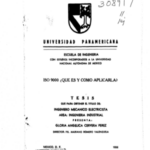 💡 Guía Completa para Implementar ISO 9000 en la UNAM: Todo lo que Necesitas Saber
💡 Guía Completa para Implementar ISO 9000 en la UNAM: Todo lo que Necesitas Saber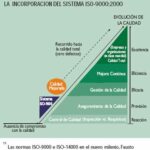 ✅📝 Guía completa sobre el uso de ISO 9000: ¿Cómo implementar esta norma con éxito?
✅📝 Guía completa sobre el uso de ISO 9000: ¿Cómo implementar esta norma con éxito? 🏆 Todo lo que necesitas saber sobre ISO 9000 UNE: ¡Garantía de excelencia!
🏆 Todo lo que necesitas saber sobre ISO 9000 UNE: ¡Garantía de excelencia! 📝💡 ¡Todas las claves sobre la ISO 9000 de 2015 en WORD! Descubre cómo aplicarla correctamente 📚🔍
📝💡 ¡Todas las claves sobre la ISO 9000 de 2015 en WORD! Descubre cómo aplicarla correctamente 📚🔍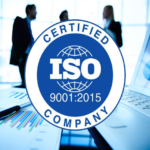 🌐 ¡Bienvenido al Sitio Oficial de ISO 9000! Descubre todo sobre el estándar de calidad ISO 9000 aquí
🌐 ¡Bienvenido al Sitio Oficial de ISO 9000! Descubre todo sobre el estándar de calidad ISO 9000 aquí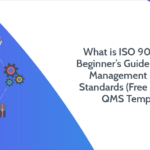 🌍 ISO 9000: Your Go-To Guide for Environmental Management 🌱
🌍 ISO 9000: Your Go-To Guide for Environmental Management 🌱